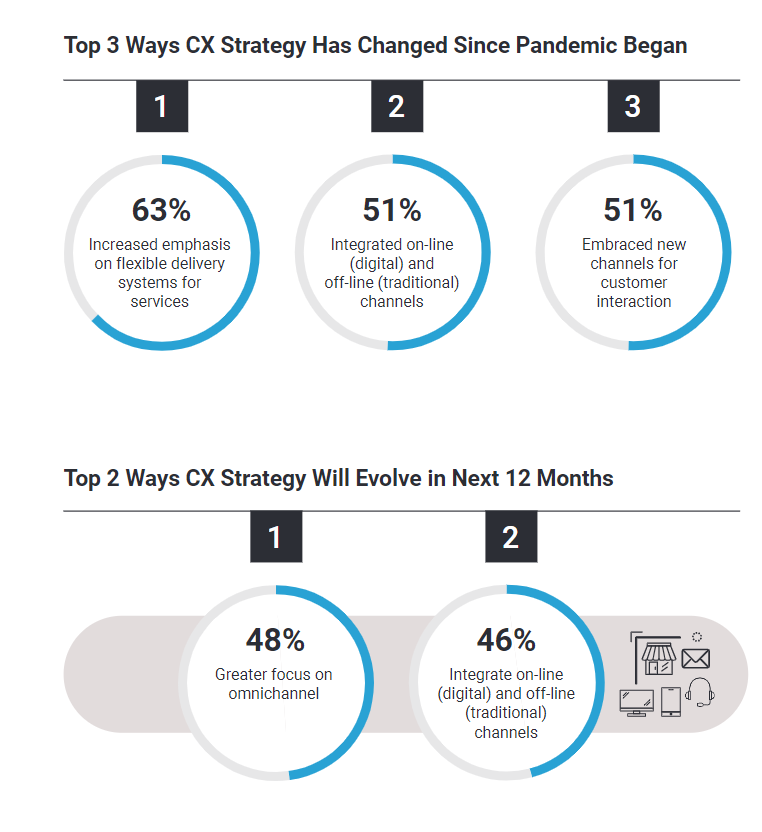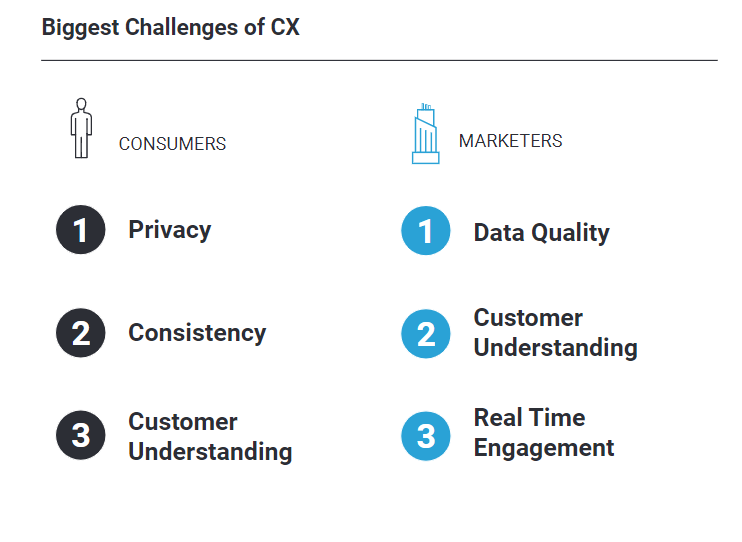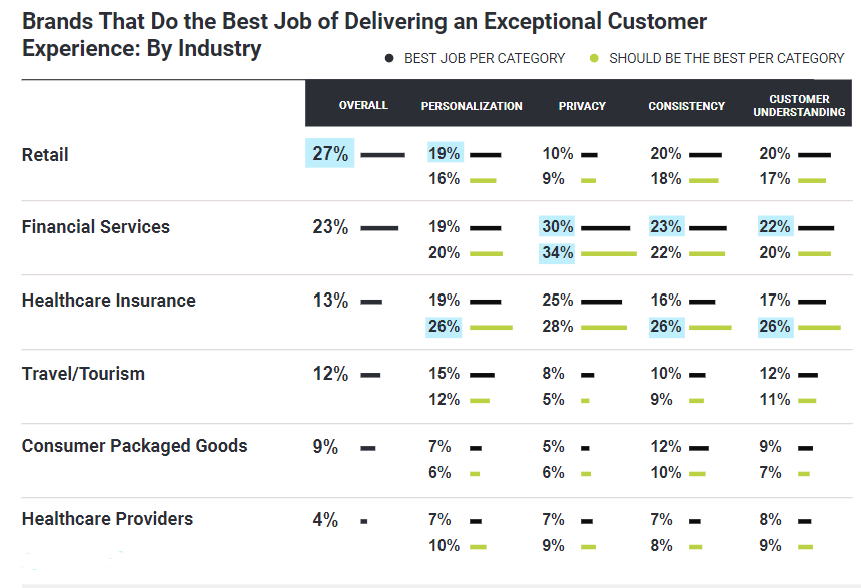Customer experience and service have long been a staple of a company wishing to retain and earn the business of new consumers. For them to pull off customer service in the digital age, however, well - that has become a new race of sorts, one in which service providers stand to gain a lot if they can extend the kinds of customer experiences folks want.

The Harris Poll
The Coronavirus Pandemic helped to usher us to this point. In 2022, things are way more customer-centric and far more focused on rich experiences. Digital-first, as a result, is a must to simplify the customer experience. If customers want to talk to representatives on the channels most comfortable for them - they should be able to.
Something that is not too incredibly surprising is that voice calls remain the preferred method of contact for customers. SMS, self-service, web/live chat, Facebook, email, Twitter, and even messaging apps like Whatsapp all play a role in extending customer service. All this: powered by UC or unified communications platforms that enable said experiences.
The Intent of Customer Service
In the end, the intent is to deliver superior customer experiences to patrons who say, today: they crave far greater customer experiences than before. According to researchers at McKinsey, now more than ever, people need extra information, guidance, and support to navigate through this novel set of challenges.

The Harris Poll
In a report on "adapting customer experience in the time of coronavirus," authors Rachel Diebner, Elizabeth Silliman, Kelly Ungerman, and Maxence Vancauwenberghe note that:
"Customers need digital, at-home, and low-touch options. Digital-led experiences will continue to grow in popularity once the Coronavirus quells - and companies that act quickly and innovate in their delivery model to help consumers navigate the Coronavirus Pandemic safely and effectively will establish a strong advantage."
To give further context, I have compiled a list of 40 statistics from various sources that demonstrate how much the market evolved during the Pandemic and more.
Why Does 'Great' Customer Service Matter?
The short answer is yes, and here are some statistics that demonstrate exactly why that is the case:
- Businesses that prioritize customer experience (CX) have between four and eight percent higher revenue than competitors. [Source: techjury]
- It can lead to higher customer retention rates and increased profits ranging from 25% to 95%. [Source: Bain & Company]
- On average, companies can improve the customer experience they offer and see revenue increase anywhere from 10-15%. [Source: Bare International]
- UC-based companies lose $1.7 trillion because of poor customer service. [Source: GetFeedback]
- Sixty-four percent of consumers want brands to connect with them. [Source: Sprout Social]
- Thirty-four percent of customers rate a company as delivering a “good” customer experience. And they are more likely to purchase again. Thirty-seven percent say they are more likely to recommend a business because of a good experience. [Source: Qualtrics XM Institute, ROI of Customer Experience]

The Harris Poll
- Forty-five percent of customers withdrew a negative evaluation of a company in light of an apology. A mere 23% of customers rescinded negative reviews in return for compensation. [Source: The Nottingham School of Economics]
- Eighty-six percent of buyers are willing to pay more for a great customer experience. [Source: Super Office]
- Fifty-six percent of customers stay loyal to brands that “get them.” [Source: smallbizgenius]
- Seventy-five percent of customers surveyed are more willing to share personal data with a brand they trust. [Source: Forbes]
- Companies that excel at customer experience have 1.5x more engaged employees than companies that deliver poor customer experiences. [Customer Contact Mind Xchange]
Does Bad Customer Service Hurt Brands?
Poor customer service can lead to a lot of unintended consequences for businesses. Most notably is the loss of customers.
Not only is this a possibility, but poor customer service can lead to poor and rather public reviews that lead to further loss of revenue. Simply put, it should be the focus of every business to provide exceptional experiences, accordingly.
- When customers have service-related problems, they become four times more likely to buy from a competitor than if it was a product- or price-related issue. [Source: Bain & Company]
- Forty percent of consumers start buying from a competitor because they hear they have excellent customer service. [Source: Zendesk]
- Feeling unappreciated by a company is the number one reason customers switch away from products and services. [Source: Vonage]
- Poor customer service loses American businesses over $62 billion annually. [Source: HelpScout]
- Seventy-four percent of customers are likely to take their business elsewhere if they find the purchasing process too arduous. [Source: HelpScout]
- Seventy percent of consumers say technology has made it easier to switch brands and suppliers. [Source: Salesforce]
UCC (unified communications and collaboration) technology, as you have discovered by now, is a significant enabler of enabling things like Omnichannel support, which we will support next.
Omnichannel Support
Omnichannel support in today's business landscape is no longer an add-on. It has become a necessary part of any respectable business communications stack. Meeting customers where they are is something they expect, and if this is not possible, well, your customer service experiences might be lacking.
- More than 89% of companies see customer experience as a principal factor that drives customer loyalty and retention. [Source: invesp]
- The more complex the customer service issue (for example, payment disputes or complaints) - the more likely customers are to seek out an actual person on the phone (40%) or a face-to-face interaction (23%) as opposed to online chat. [Souce: Comm100]
- Millennials choose live chat as their preferred support channel, with 52% saying they would rather converse over text. [Source: Comm100]
- Eighty percent of consumers use social media to engage with brands. [Source: Forrester]
Social media, SMS, voice, and other forms of technology remain popular forms of contact - especially as the Coronavirus Pandemic made omnichannel customer support increasingly widespread.
In a research report by CounterPath, an Alianza Company, researchers explore the Future of Unified Communications in Retail. The report found that 98% of Americans say they switch between devices in a single day. Researchers there note; this implies that retailers must support omnichannel communication to ensure positive customer experiences.
Artificial Intelligence Automated Support
AI and AR can do a lot to keep customers satisfied. The two technologies can help reduce call wait times thanks to the self-service options thanks to the ability to access IVR (interactive voice response), chatbots, and more.
On the self-service front, bots can help customers achieve things like checking their flight status, making reservation updates, etc. Chatbots, IVR (interactive voice response), and even things like sentiment analysis; help agents best understand customers. It can even prompt them to respond when a negative sentiment gets detected.
Chatbots might help customers gain better control over accommodations, for example - allowing them to update hotel reservations. Flights, rental cars, updates to an appointment with a physician, and a lot more can be facilitated via chatbots - relieving much of the burden felt by agents.
- Thirty-four percent of sales and marketing leaders believe that artificial intelligence will cause the most sizable improvement in customer experience. [Source: Oracle]
- Forty-seven percent of organizations expect to implement chatbots for customer support services in 2021. [Source: Linchpin]
- AI augmentation will create $2.29 trillion of business value by 2021. This value is equal to 6.2 billion hours of worker productivity globally. [Source: Gartner]
Customer Self Service
Plenty of folks leverage customer self-service options, according to data. Take a look for yourself:
- Eighty-nine percent of US consumers expect companies to have an online self-service support portal. [Source: Statista]
- Seventy-nine percent of US consumers say they have used a self-service portal for customer service. [Source: Statista
Timeliness Does Matter
When a customer reaches out - it should not take too long to reach an agent or get the kind of help they need, stressing the importance of omnichannel customer service even further. It turns out that people are willing to wait a bit, but they prefer not being on hold. And what if they have a simple request? Shouldn't they be able to fulfill it themselves? Let's explore that idea further.
- More than half of all customers prefer to chat with someone in real-time and online; rather than call a company for support. [SuperOffice]
- Three-quarters of online customers expect help within five minutes. [Source: McKinsey]
- When customers contact a brand on Twitter, 53% expect a response within an hour. If customers make a complaint, that number jumps to 78%. [Source: Lithium]
- When asked how long they were willing to be put on hold, about a third of respondents said; they are not willing to wait. Nearly thirty percent said they would wait one minute. Only 4.1% said they would wait as long as it took. [Plum Voice]
- Customer expectations for chat response times are high, with average wait times of just 45 seconds. [Source: Com100]
- Ninety percent of customers rate an “immediate” response as "important" or "very important" when they have a customer service question. 60% of customers define “immediate” as ten minutes or less. [Source: HubSpot Research]
- Seventy-three percent of customers say: time is a critical factor in determining "good" and poor customer service experiences. Source: Hubspot]
Companies Must Invest in Customer Service
Now is time to invest in customer service as customer expectations have only risen during the Pandemic. We are set to see greater investment in the field, consequently.
- Forty-six percent of businesses surveyed by SuperOffice say their number one priority in the next five years is their customer experience. [Source: SuperOffice]
- Seventy-eight percent of customers have backed out of purchase due to a poor customer experience. [Source: Glance]
- The customer experience management market is estimated to be worth $14.9 billion by 2025. [Source: Markets and Markets]

The Harris Poll
- Don't discount mobile experiences, as forty-five percent of the total U.S. e-commerce market came from mobile commerce in 2020. [Source: Business Insider]
- By 2023, 25% of companies plan to integrate marketing, sales, and customer experience (CX) into a single platform. [Source: Gartner]
- Seventy-eight percent of consumers said they have better customer service experiences when agents don’t appear like they are reading from a script. [Source: Software Advice]

![40 Customer Service Statistics You Should Know [GetVoIP Report] 40 Customer Service Statistics You Should Know [GetVoIP Report]](https://getvoip.com/uploads/Customer-Service-Statistics-700x406.png)

